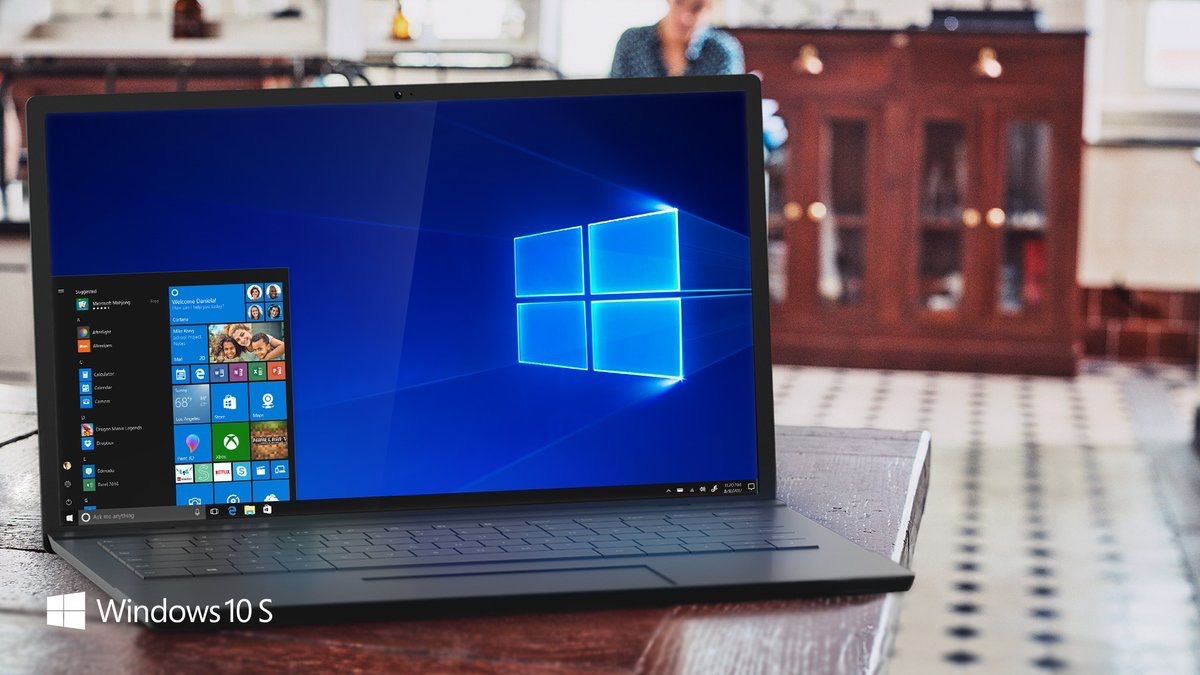When Microsoft announced the original version of the Surface Laptop, it ran a new version of the Windows 10 operating system called Windows 10 S.
2018's Surface Laptop 2 didn't have it, but some other new PCs do, especially ARM-powered systems - but what is it?
Now called Windows 10 (or Windows 11) in S Mode, it can be difficult to work out whether you have it or not.
The key thing is that when using Windows 10 in S Mode, you probably won't know that there's any difference to Windows 10 Pro, apart from the different stock wallpaper. It looks the same and works the same in most instances.
What is Windows 10 or 11 in S Mode?
Windows 10 or Windows 11 in S Mode is described as a fully-functional version of Windows that's designed to run smoothly on all hardware and increase security by only enabling you to run certain apps.
Those things include things like faster log-in, better battery life and easy management across large numbers of devices. When it was originally launched, Microsoft demonstrated that a new user logging onto Windows 10 S could get into the PC faster than a standard Windows 10 Pro PC.
You can only run verified apps from the Windows Store
The big catch with Windows 10 in S Mode is that it's designed to only run verified apps from the Windows Store. You will not be able to download apps online and install them; this version is effectively sandboxed. This doesn't change with Windows 11 in S Mode.
That's a big disadvantage for many users but Windows in S Mode is meant for education or environments where you don't want users installing their own apps.
That means it's potentially more secure, but it also means that Microsoft knows exactly what software it's going to be dealing with and should mean that power demands can be matched, without some scrappy rogue app sitting in the background eating power and hogging resources.
If a person using Windows 10 S tries to install an app from outside of the Windows Store, it will be stopped, but you'll then be offered an alternative that's from the Windows Store, so verified by Microsoft.
There aren't any hardware restrictions on Windows 10 S either, as it's designed to run across a full range of devices. Microsoft is working on compatibility with a wide range of third-party accessories and devices because you'll have to have drivers signed by Microsoft to be able to use them with Windows 10 S.
What devices will run Windows 10 in S Mode
Intel-based PCs intended for education or business use may be supplied in S Mode. One entire group of devices for which S Mode is enabled is if they are based on ARM processors. Currently, this means PCs that run on Qualcomm's Snapdragon platform as well as the Microsoft SQ1 chip.
That's because ARM processors aren't compatible with programs written for Intel or AMD processors. They will run universal apps from the Windows Store though.
Can you switch out of Windows in S Mode?
Yes, you can. You can upgrade a Windows 10 S device to Windows 10 Pro with just a few clicks and an update. That will remove the restriction on app installs so you can use it just like any other Windows 10 Pro PC.
Switching a device out of S mode needs internet connectivity as you need to access the Microsoft Store. If you switch out of S mode, you are not able to switch back to S mode later.
- Go to Settings
- Click Privacy and Security
- Click Activation on the left
- You will see an option to switch to Windows 10/11 Home/Pro depending on what you're using already. Click the Go to Store button. (Note: Don't click Go to Store under Upgrade your Edition of Windows)
- On the Microsoft Store page, click Get and then click Install when prompted and follow the steps.
Are there any changes for Windows 11 in S Mode?
There is one key change and that is that S Mode is only supported on Windows 11 Home and not Windows 11 Pro. So if you're upgrading Windows 10 Pro in S Mode to Windows 11, you'll need to switch out of S Mode first.

